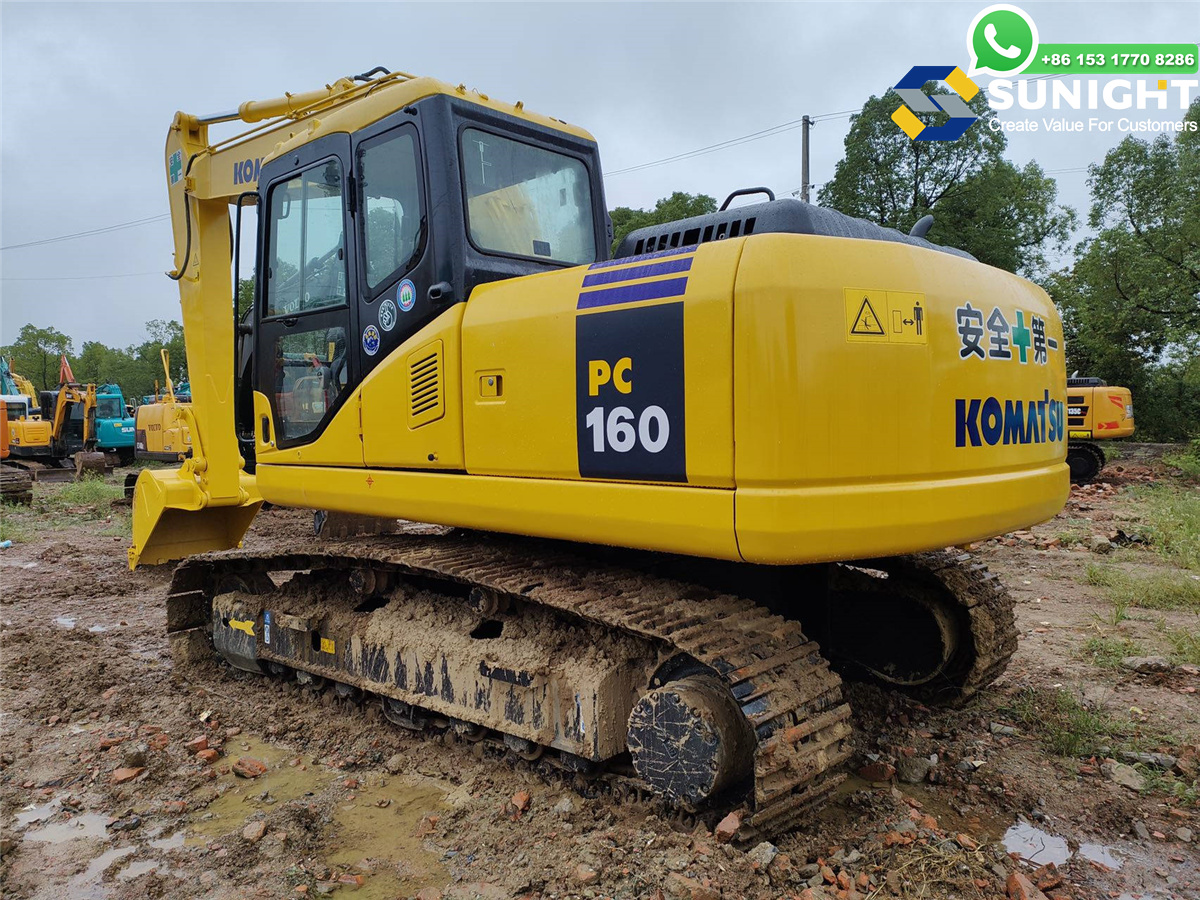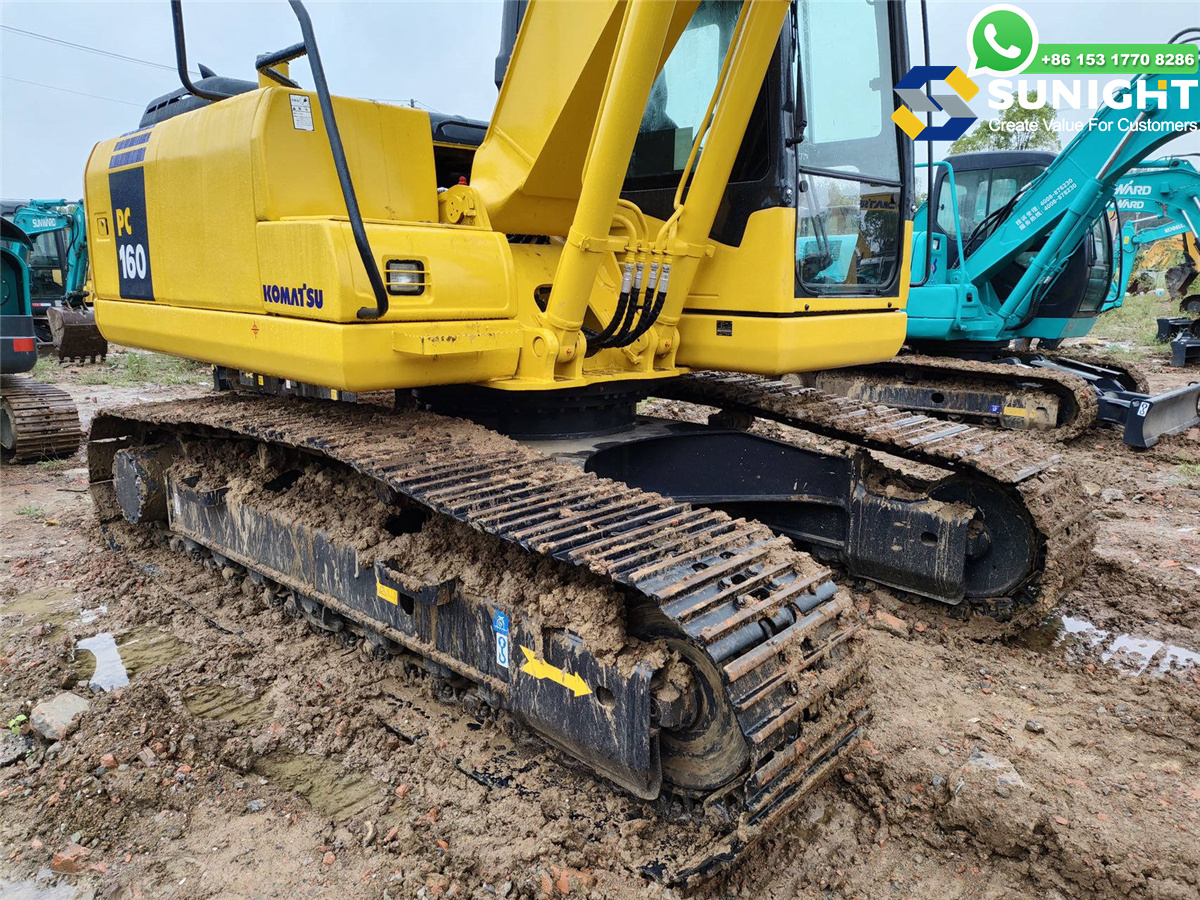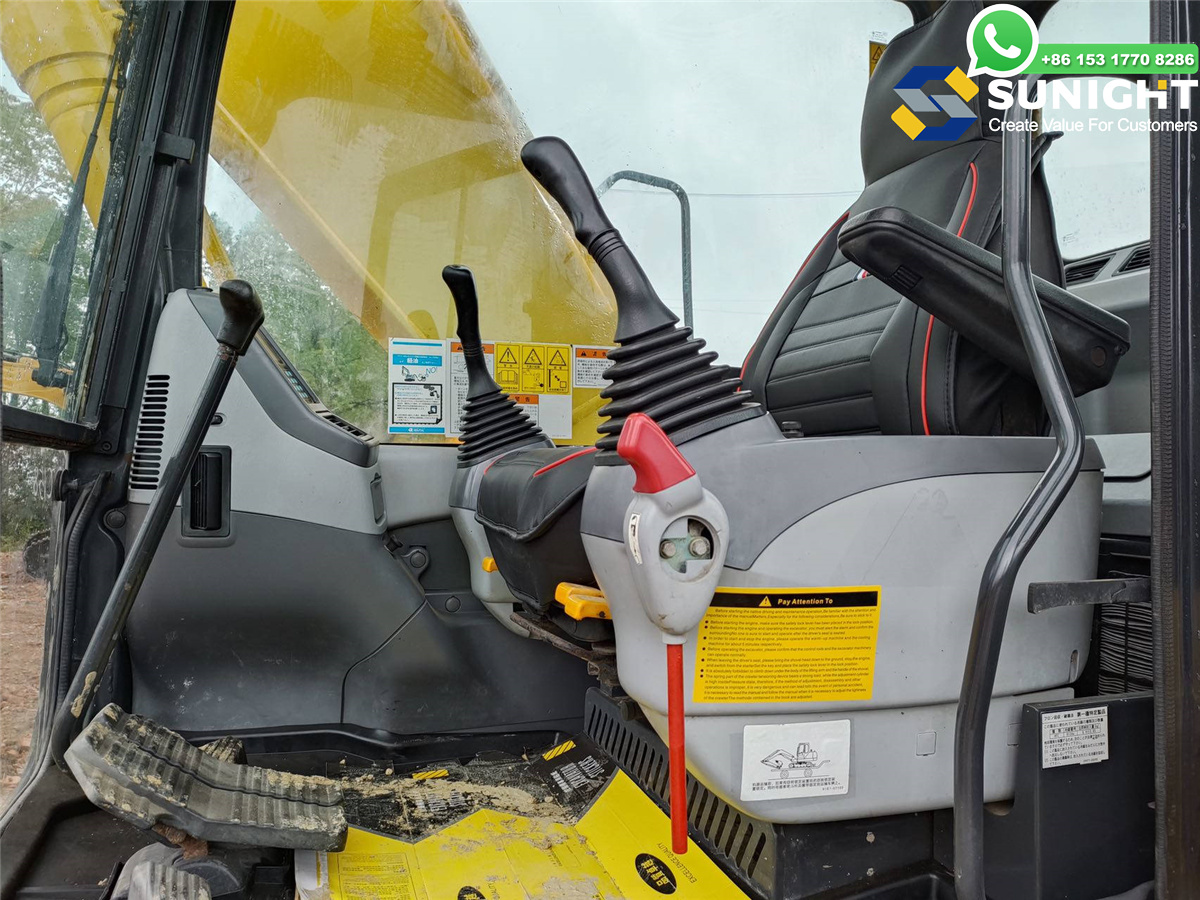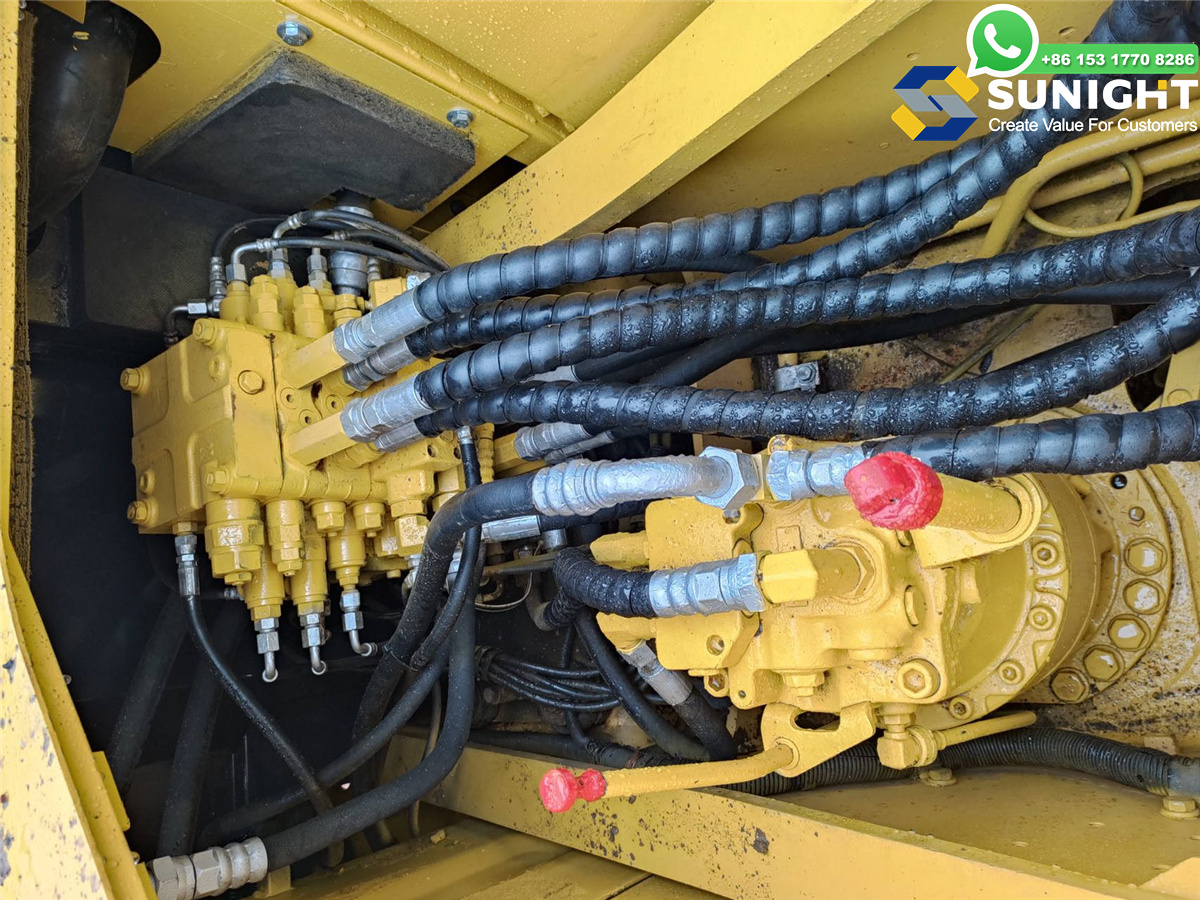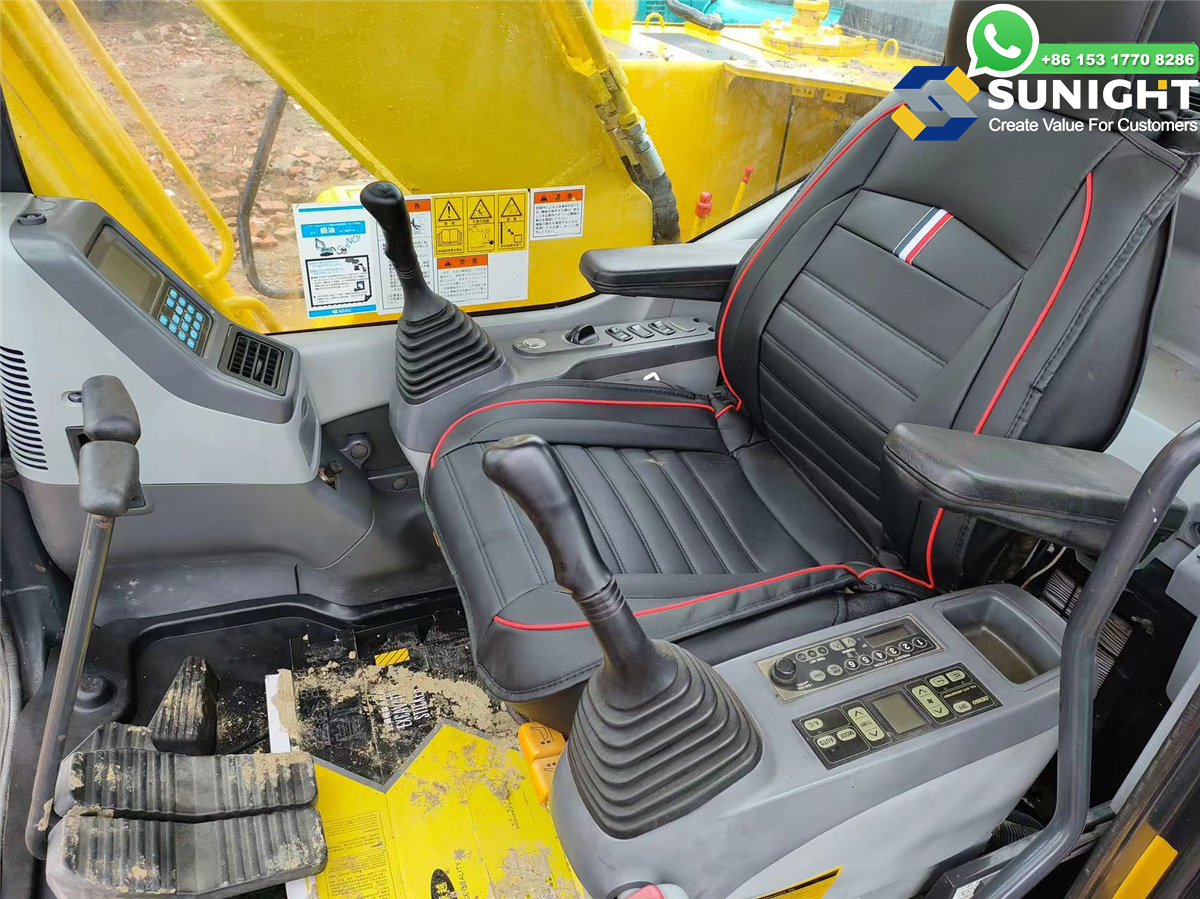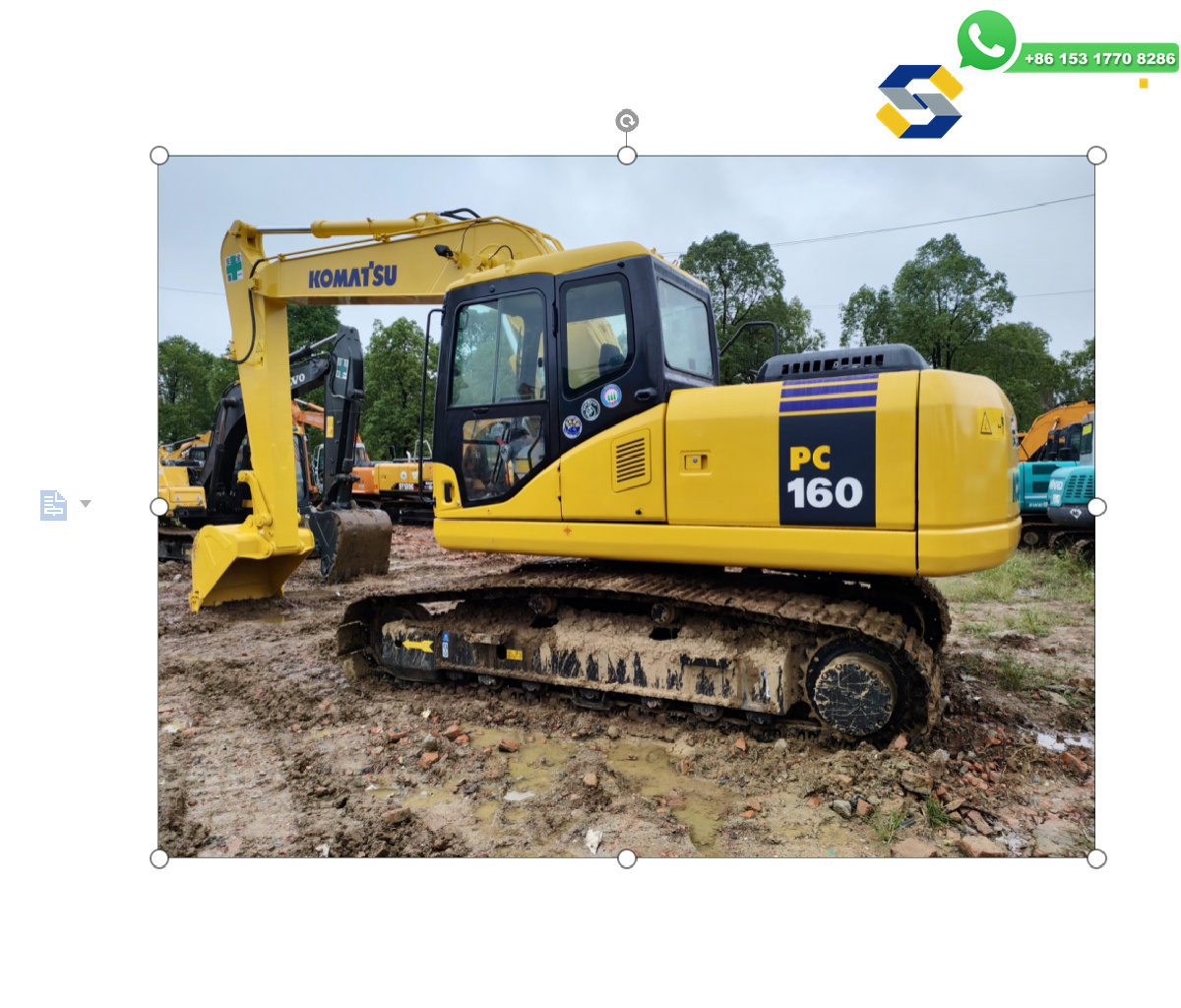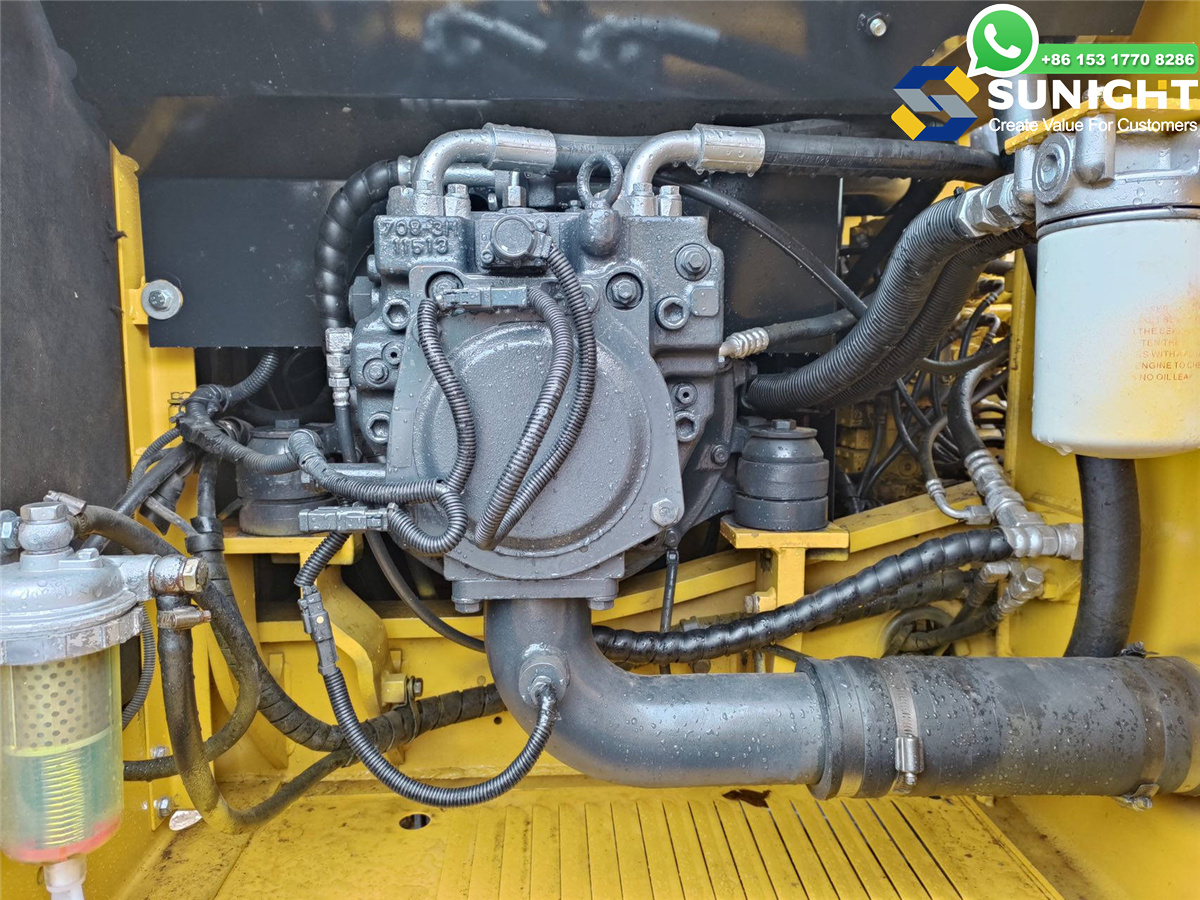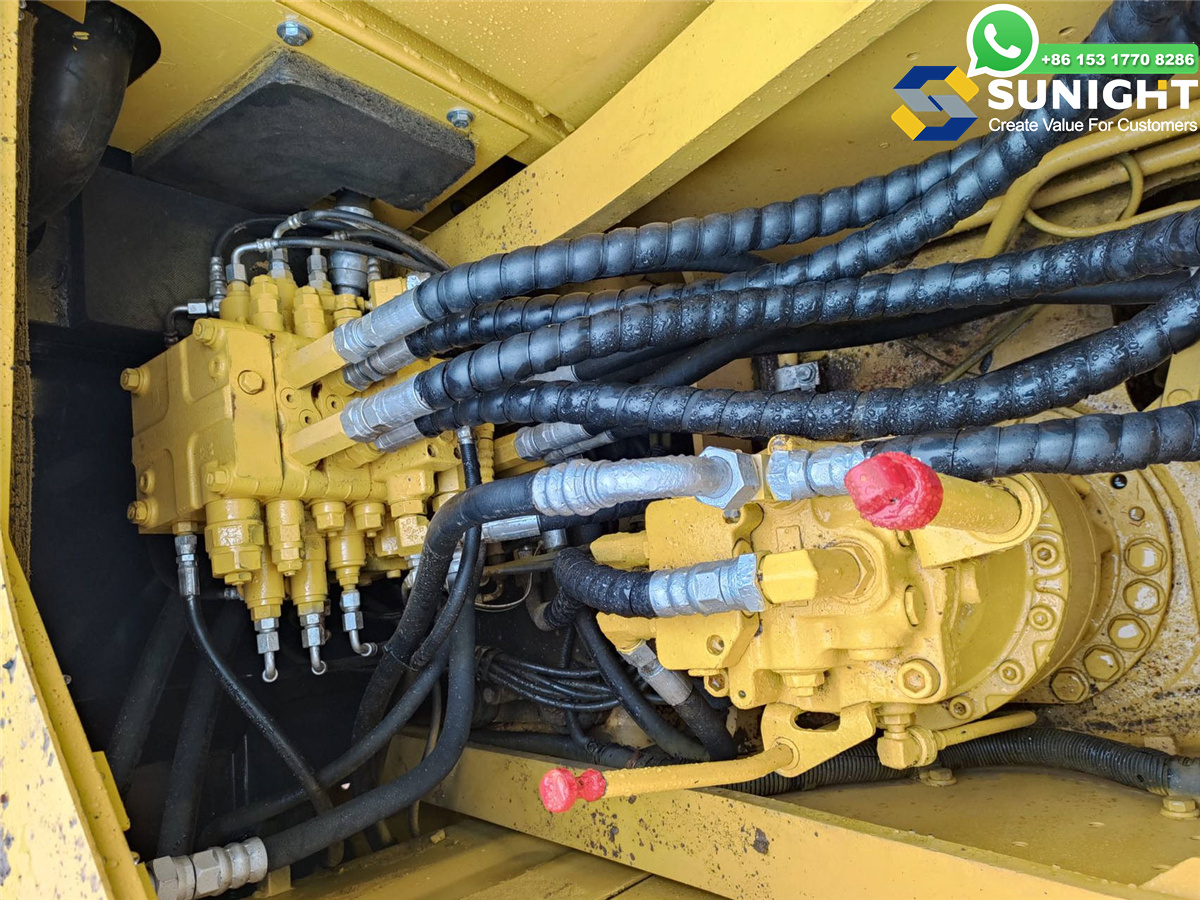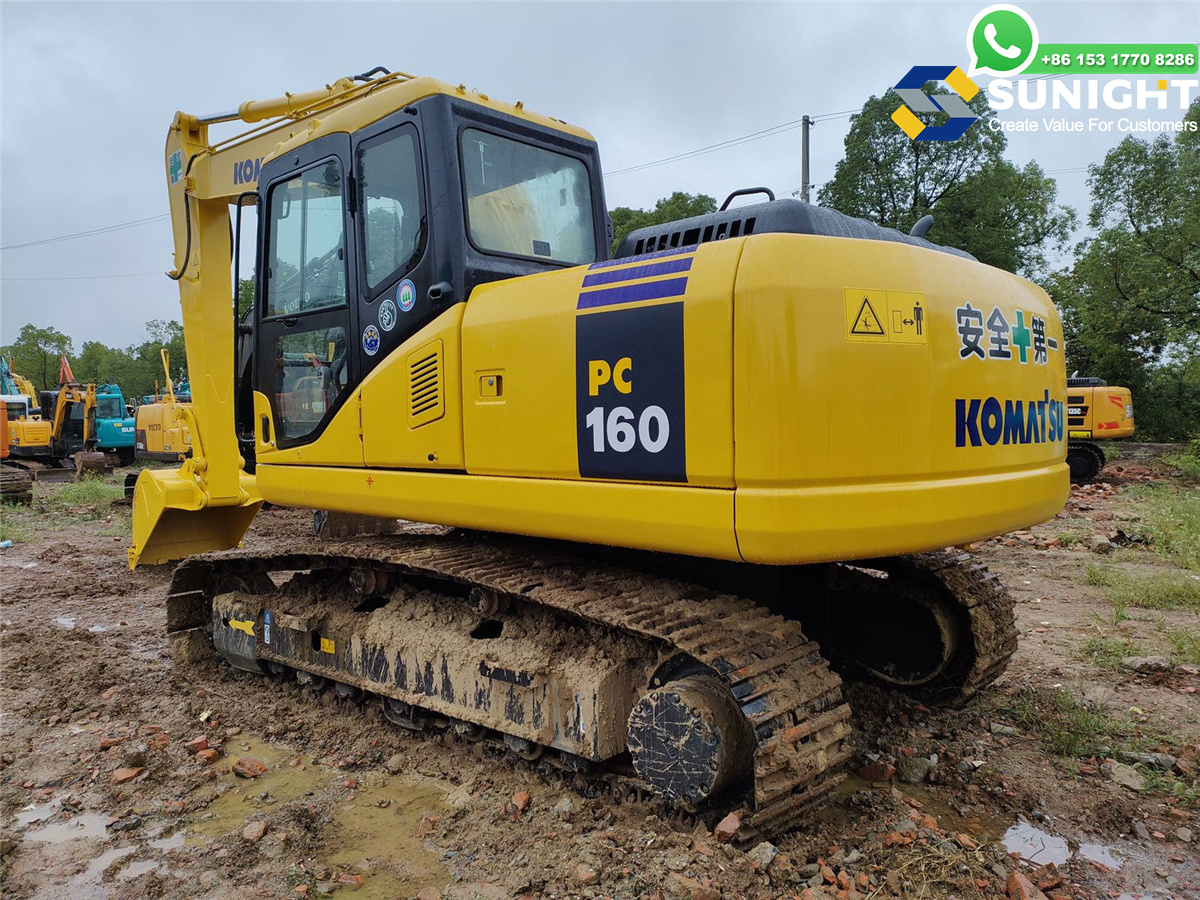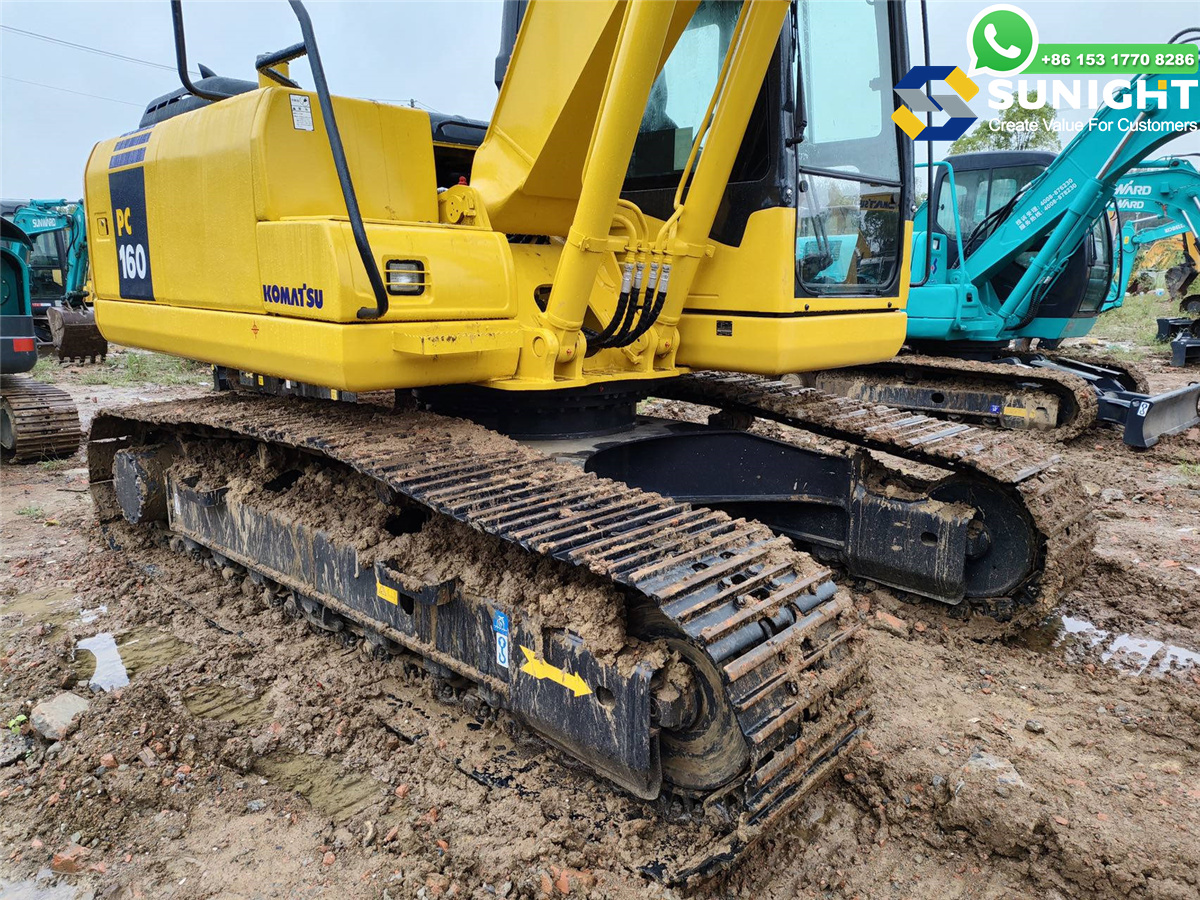You Are Here: /
Home /
Gallery Center /
Used Excavators Gallery /
Used Komatsu Excavator PC160 Gallery
Used CAT Excavators
Used Excavator CAT Backhoe 420F
Used Excavator CAT 320B/320BL
Used Excavator CAT 320C
Used Excavator CAT 320D
Used Excavator CAT 320GC
Used Excavator CAT 323D2L
Used Excavator CAT 330C
Used Excavator CAT 330D
Used Excavator CAT 336D
Used Excavator CAT 340D
Used Excavator CAT 345D
Used Excavator CAT 349D
Used Excavator CAT M315D
Used Excavator CAT 305.5E
Used Excavator CAT 306
Used Excavator CAT 306D
Used Excavator CAT 307C
Used Excavator CAT 307D
Used Excavator CAT 308D
Used Excavator CAT 312C
Used Excavator CAT 312D
Used Excavator CAT 312D2GC
Used Excavator CAT 315D
Used Excavator CAT 325B
Used Excavator CAT 325DL
Used Excavator CAT 330BL
Used Excavator CAT E70B
Used Excavator CAT E120B
Used Excavator CAT E200B
Used Hitachi Excavators
Used Excavator Hitachi ZX75
Used Excavator Hitachi ZX120
Used Excavator Hitachi ZX200-3G
Used Excavator Hitachi EX60
Used Excavator Hitachi EX120
Used Excavator Hitachi EX200-1
Used Excavator Hitachi EX200-3
Used Excavator Hitachi EX200-5
Used Excavator Hitachi EX300-1
Used Excavator Hitachi ZX60
Used Excavator Hitachi ZX70
Used Excavator Hitachi ZX200-6
Used Excavator Hitachi ZX240-3G
Used Komatsu Excavators
Used Excavator Komatsu PC58-8
Used Excavator Komatsu PC200-8
Used Excavator Komatsu PC220-8
Used Excavator Komatsu PC35MR
Used Excavator Komatsu PC55MR
Used Excavator Komatsu PC60-7
Used Excavator Komatsu PC78US-6
Used Excavator Komatsu PC120-6
Used Excavator Komatsu PC128US
Used Excavator Komatsu PC200-6
Used Excavator Komatsu PC220-6
Used Excavator Komatsu PC300-7
Used Excavator Komatsu PC400-7
Used Excavator Komatsu PC450-8
Used Doosan Excavators
Used Excavator Doosan DX140
Used Excavator Doosan DX300
Used Excavator Doosan DX60
Used Excavator Doosan DX225
Used Excavator Doosan DH55
Used Excavator Doosan DH60-7
Used Excavator Doosan DH150LC-7
Used Excavator Doosan DH150W-7
Used Excavator Doosan DH220LC-7
Used Excavator Doosan DH225LC-7
Used Excavator Doosan DH300LC-7
Used Excavator Komatsu PC160 Gallery, Images, Pictures
Used Excavator Komatsu PC160 Main Parts Pictures
The Komatsu PC160 is a hydraulic crawler excavator designed for a variety of construction, excavation, and material handling tasks. It combines the power and performance of a larger machine with a compact design that allows it to operate effectively in both confined and open work sites. Below are the main parts and components of the Komatsu PC160 excavator:
1. Engine
- Engine Type: The Komatsu PC160 is powered by a Komatsu SAA6D102E-1 turbocharged, 6-cylinder, direct-injection diesel engine.
- Rated Power: Approximately 85.0 kW (113.6 hp) at 2,000 rpm.
- Cooling System: Includes a radiator, oil cooler, and intercooler to keep engine temperatures within an optimal operating range.
- Fuel System: Features a common rail fuel injection system, providing improved fuel efficiency, lower emissions, and better overall engine performance.
2. Hydraulic System
- The hydraulic system is one of the key features of the PC160, providing power for the movement of the boom, arm, bucket, and swing.
- Main Hydraulic Pump: A variable displacement pump that delivers the required hydraulic pressure and flow for the machine's various movements.
- Hydraulic Cylinders: These cylinders are responsible for the movement of the boom, arm (stick), and bucket. They provide precise control for digging, lifting, and other tasks.
- Pilot Control System: This system provides smooth and efficient control of the excavator, allowing the operator to make fine adjustments with minimal effort.
- Hydraulic Control Valve: The control valve directs the flow of hydraulic fluid to the various cylinders, enabling the operator to control movements of the machine and attachments.
3. Undercarriage
- Track Frame: The undercarriage is built for durability, with heavy-duty components that ensure stability during operation, especially when handling heavy loads or working on uneven terrain.
- Tracks: The PC160 uses steel tracks for enhanced durability and traction, making it suitable for working on rough surfaces, construction sites, and uneven ground.
- Track Rollers: These rollers help distribute the weight of the excavator and ensure smooth movement by reducing friction.
- Idlers: Located at the front of the undercarriage, idlers help maintain proper track tension and guide the track system.
- Sprockets: These teeth engage with the tracks to propel the excavator forward and backward.
- Track Shoes: These are the individual pads that make contact with the ground, providing traction and stability during movement.
4. Upper Structure
- Cab: The operator's cabin is designed for maximum comfort and safety. It features ergonomic controls, excellent visibility, and an adjustable suspension seat to reduce operator fatigue.
- Swing Bearing: The swing bearing allows the upper structure (cab, boom, arm) to rotate 360 degrees, giving the operator full rotation for flexibility in working around obstacles.
- Counterweight: Located at the rear of the machine, the counterweight helps maintain balance, especially when lifting heavy materials, preventing tipping.
- Engine Hood: Protects the engine and cooling system from debris and environmental elements, while also allowing easy access for maintenance and inspections.
5. Boom, Arm (Stick), and Bucket
- Boom: The main vertical arm that provides the excavator with reach and height for digging and lifting tasks.
- Arm (Stick): The extendable portion that connects the boom to the bucket. It extends the reach of the machine, enabling deeper and farther digging.
- Bucket: The primary digging and material handling tool mounted at the end of the arm. It can be swapped out for various types of buckets depending on the job (e.g., standard, narrow, trenching, or heavy-duty buckets).
- Quick Coupler: The quick coupler system allows for fast and easy attachment changes, improving productivity by reducing downtime.
6. Attachment System
- The Komatsu PC160 is compatible with a wide range of attachments, which can be easily swapped to adapt to different tasks. Common attachments include:
- Buckets (standard, narrow, trenching, or heavy-duty)
- Hydraulic Hammers
- Grapples
- Augers
- Rippers
- The quick coupler system allows the operator to quickly change attachments, which helps improve work efficiency.
7. Cooling System
- Radiator: Keeps the engine coolant temperature at an optimal level, preventing the engine from overheating.
- Oil Cooler: Cools the hydraulic oil to prevent it from reaching excessive temperatures, thus maintaining the performance and longevity of the hydraulic system.
- Coolant Reservoir: Stores coolant fluid, ensuring a steady supply to the engine’s cooling system.
8. Electrical System
- Alternator: Supplies electrical power to charge the battery and run various electrical components.
- Battery: Powers the electrical components and ensures that the machine starts reliably.
- Fuse Box and Wiring Harness: Distribute electrical power to various components of the machine and allow for troubleshooting in case of electrical issues.
- Monitoring System: The electrical system includes a monitoring system that provides real-time diagnostics for the engine, hydraulic system, fuel levels, and other critical components.
9. Transmission and Drive System
- Hydrostatic Drive: The PC160 uses a hydrostatic drive system, which provides smooth movement and allows for better control of speed and direction.
- Final Drive Motors: These motors drive the tracks and enable the excavator to move forward or backward.
- Planetary Gear System: The planetary gear system reduces the speed of the drive motors and increases torque, which improves the machine's ability to handle heavier loads or rough terrain.
- Travel Speed Control: This feature allows the operator to adjust the speed of travel, making it easier to maneuver the machine in tight spaces or on uneven ground.
10. Swing System
- Swing Motor: This motor powers the rotation of the upper structure (cab, boom, and arm) around the base of the machine, allowing for 360-degree rotation.
- Swing Reducer: This system reduces the speed of the swing motor and increases its torque, allowing for smoother and more controlled swinging movements.
- Swing Ring: A bearing that enables the continuous rotation of the upper structure, providing full rotational capability.
11. Fuel System
- Fuel Tank: The diesel fuel tank stores the fuel required for engine operation.
- Fuel Filters: Filters the fuel before it enters the engine to prevent dirt and debris from causing damage to the engine and fuel system.
- Fuel Filler Neck: Located on the side of the machine, this is where fuel is added to the tank.
12. Steering and Travel System
- Pilot-Controlled Joystick: The joystick allows the operator to control the machine’s movements, including boom, arm, bucket, swing, and travel speed, with minimal effort.
- Hydraulic Steering: The system uses hydraulic motors to control the movement of the tracks, making steering more efficient.
- Travel Motors: These hydraulic motors provide power to the tracks, allowing for forward and backward movement.
- Travel Speed Control: Allows the operator to adjust the speed based on the job requirements or terrain.
13. Operator Comfort and Safety
- Ergonomic Operator Cabin: The operator’s cab is designed with comfort and safety in mind. It features an adjustable seat, easy-to-reach controls, and a clear view of the work area.
- Suspension Seat: Reduces the effects of vibration and shocks, making it easier for the operator to work long hours without discomfort.
- Climate Control: The cab is equipped with air conditioning and heating to ensure the operator is comfortable in all weather conditions.
- ROPS (Rollover Protection Structure) and FOPS (Falling Object Protection Structure): These safety features protect the operator in the event of a rollover or falling debris.
- Wide Windows: Designed for enhanced visibility, reducing blind spots and improving safety for the operator during operation.
14. Telematics and Monitoring System
- KOMTRAX: The Komatsu PC160 can be equipped with KOMTRAX, Komatsu’s telematics system. This system allows real-time monitoring of the machine’s performance, fuel usage, maintenance alerts, and machine location.
- Machine Monitoring Display: The operator can use the machine’s onboard display to check key operational data, including engine temperature, hydraulic pressure, fuel level, and maintenance alerts.
©SUNIGHT All Rights Reserved. - Shanghai Sunight Machinery Co., Ltd.


 Whatsapp
Whatsapp Message
Message USED
USED  CASES
CASES  New Truck Trailers
New Truck Trailers CONTACT US
CONTACT US